Cooling Noise and Power
For my last few tests, rather than focusing on in game performance, I like to check out other aspects of video card performance. These are also the most important ways to differentiate the performance between cards that have the same GPU. To start things off I took a look at power usage.
For this, our new test setup utilizes the Nvidia-designed PCat v2 along with cables to handle both traditional 6 or 8-pin connections as well as the new 12VHPWR. The PCat also utilizes a PCIe adapter to measure any power going to the card through the PCIe slot so we can measure the video card wattage exclusively, not the entire system as we have done in the past. I test with a mix of applications to get both in game, synthetic benchmarks, and other workloads like Blender and AIDA64. Then everything is averaged together for our result. I also have the individual results for this specific card and I document the peak wattage result as well which is almost always Time Spy Extreme. The TUF Gaming RTX 4070 Ti OC is an overclocked card so it isn’t a direct look at stock RTX 4070 Ti performance but it averaged 290 watts in our tests with a peak of 346 watts. This put it below the RTX 3070 Ti by 18 watts but above the old RTX 3070, even with this being an overclocked card it is surprisingly power efficient.
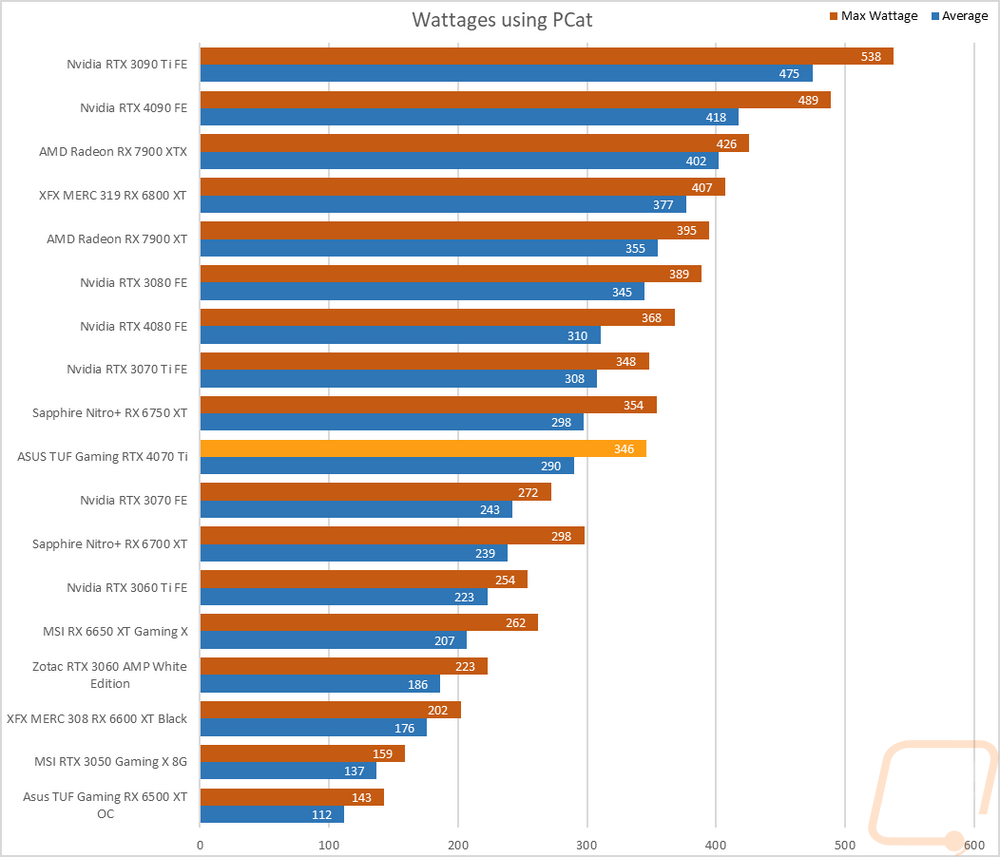

With having exact peak wattage numbers when running Time Spy Extreme I was also able to put together a graph showing the total score for each watt that a card draws which gives us an interesting look at overall power efficiency in the popular and demanding benchmark. Even with this being an overclocked card, the RTX 4070 Ti topped the chart.
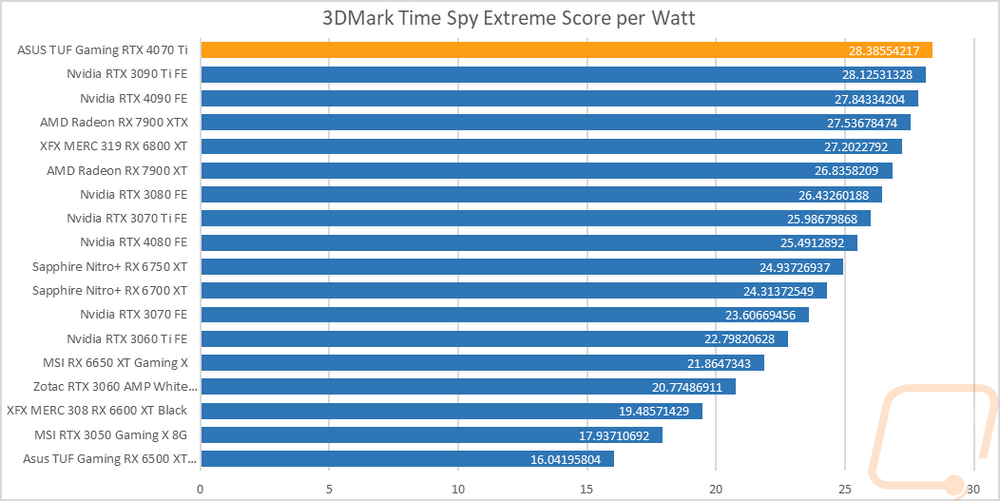
My next round of tests was looking at noise levels. These are especially important to me because I can’t stand to listen to my PC whirling. Especially when I’m not in game and other applications are using the GPU. For my testing, though I first tested with the fan cranked up to 100% to get an idea of how loud it can get, then again at 50% to get an idea of its range. Here the TUF Gaming RTX 4070 Ti OC ran quiet at 39.4 decibels at 50% fan speed and even at 100% fan speed was down near the bottom of our charts at 56.8 decibels. In the load test, it was even quieter than the 50% fan speed test at 38.9 db but this put it higher up in the chart near the halfway point whereas, on the other two tests, it was down at the bottom. The triple fan setup on the TUF Gaming RTX 4070 Ti OC does offer control of the fans split up by two controls, the two outer fans are tied together and then the middle fan is on its own. But when cranked up all three ran at the same 3192 RPM which is lower than most cards run and explains the quieter performance in most of the tests.
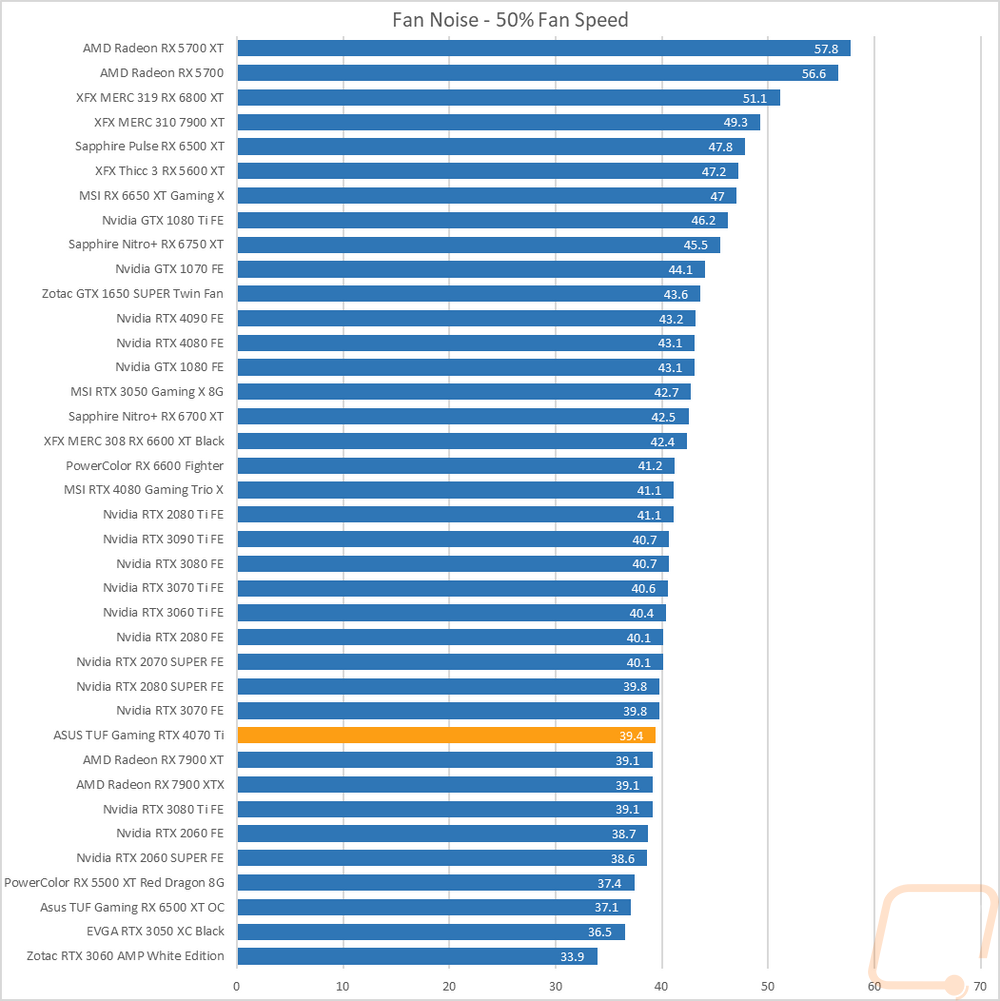
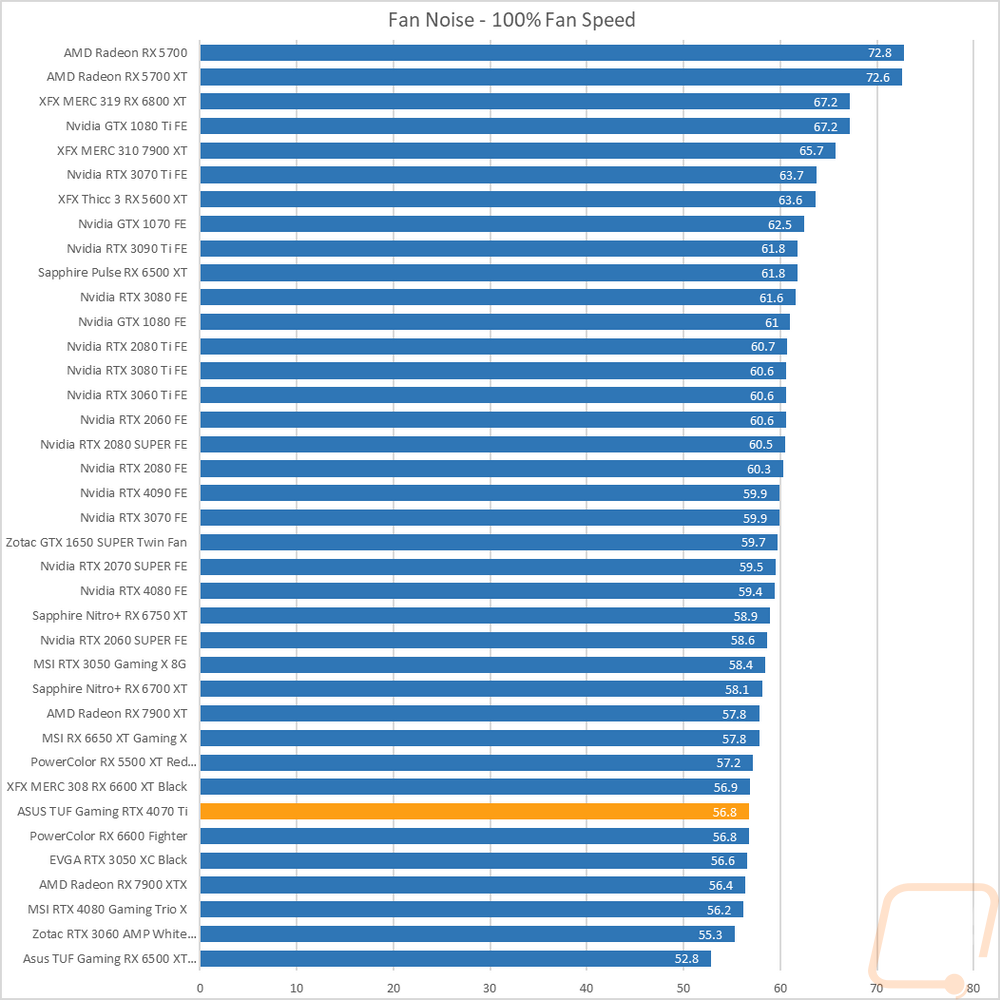
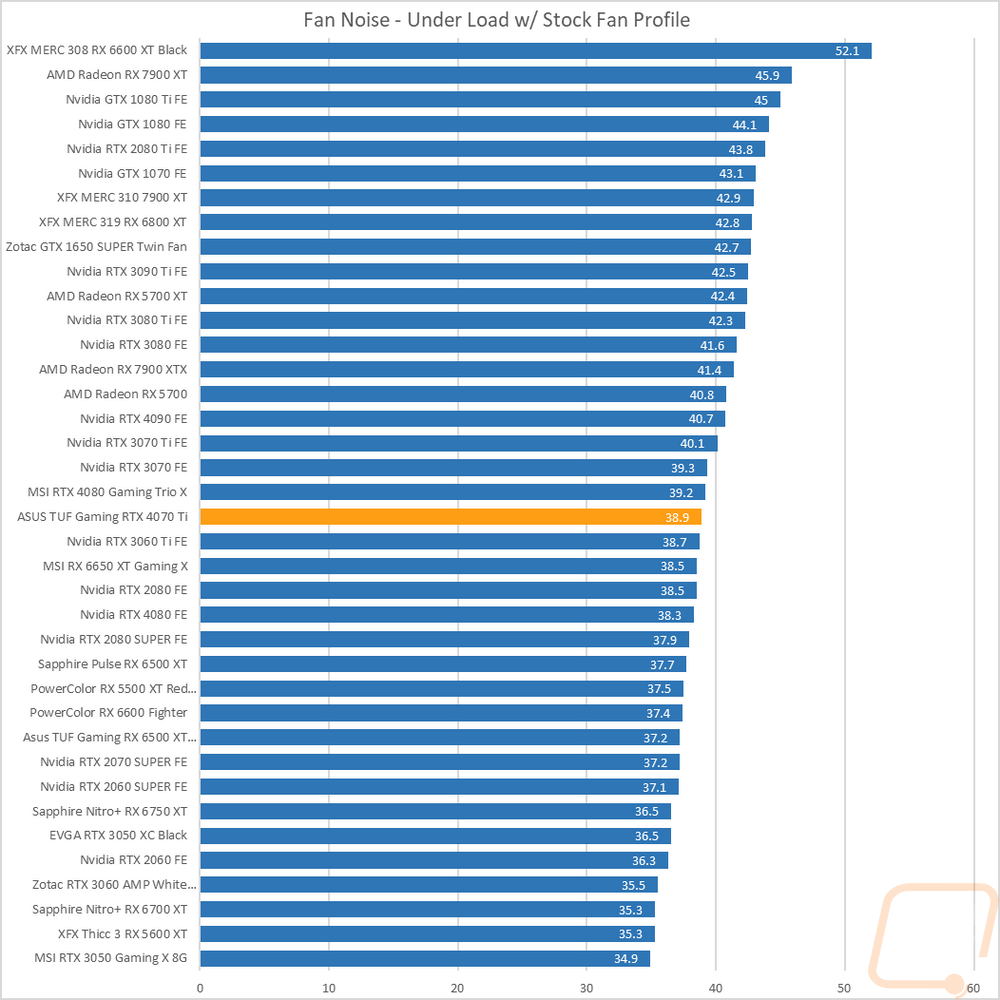
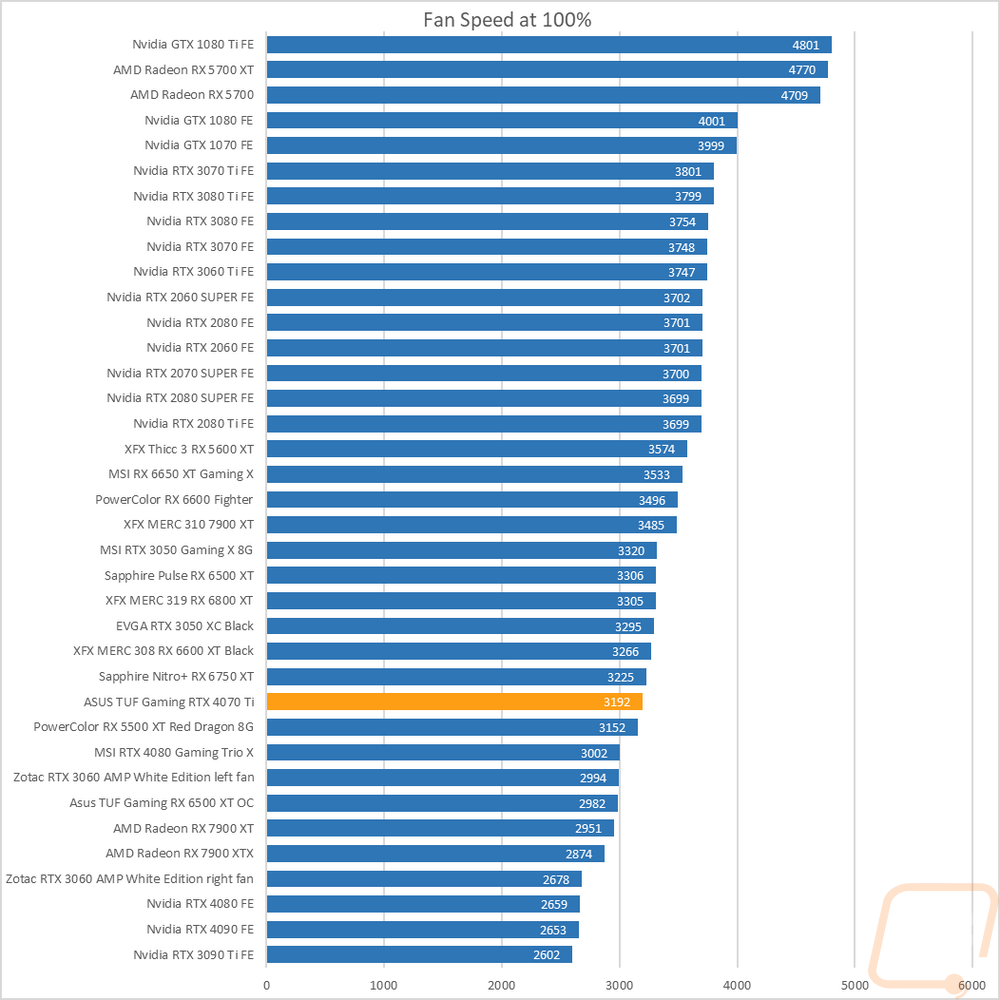
To finish up my testing I of course had to check out the cooling performance. To do this I ran two different tests. I used AIDA64’s Stress Test run for a half-hour each to warm things up. Then I documented what temperature the GPU leveled out at with the stock fan profile and then again with the fans cranked up to 100%. With the stock profile, the TUF Gaming RTX 4070 Ti OC leveled off at 62c and had a GPU hotspot of 76c. I should also point out that the fans were running at 42% when at this temperature. This put the TUF Gaming RTX 4070 Ti OC in the bottom 1/3 of our charts and right with the RTX 4080 Founders Edition and one degree above the stock-clocked RX 7900 XT. Then with the fans cranked up, the TUF Gaming RTX 4070 Ti OC leveled off at 54c which is higher up in our charts, and right with the overclocked RTX 4080 Gaming Trio X. The delta between the two tests was just 8c which is on the low end and shows that the cooler on the TUF Gaming RTX 4070 Ti OC doesn’t have too much extra headroom even though at the stock fan profile it was at under half fan speed. At 100% fan speed the GPU hotspot was better at 67c.
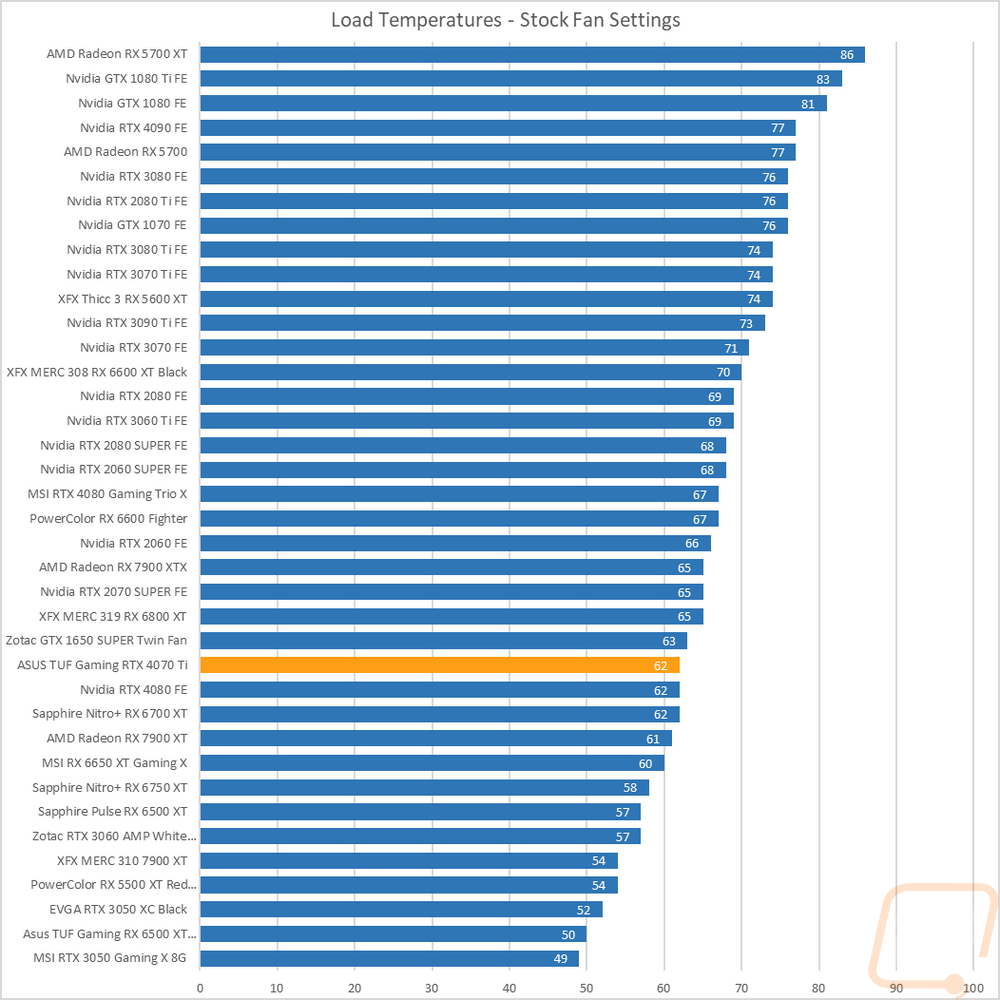
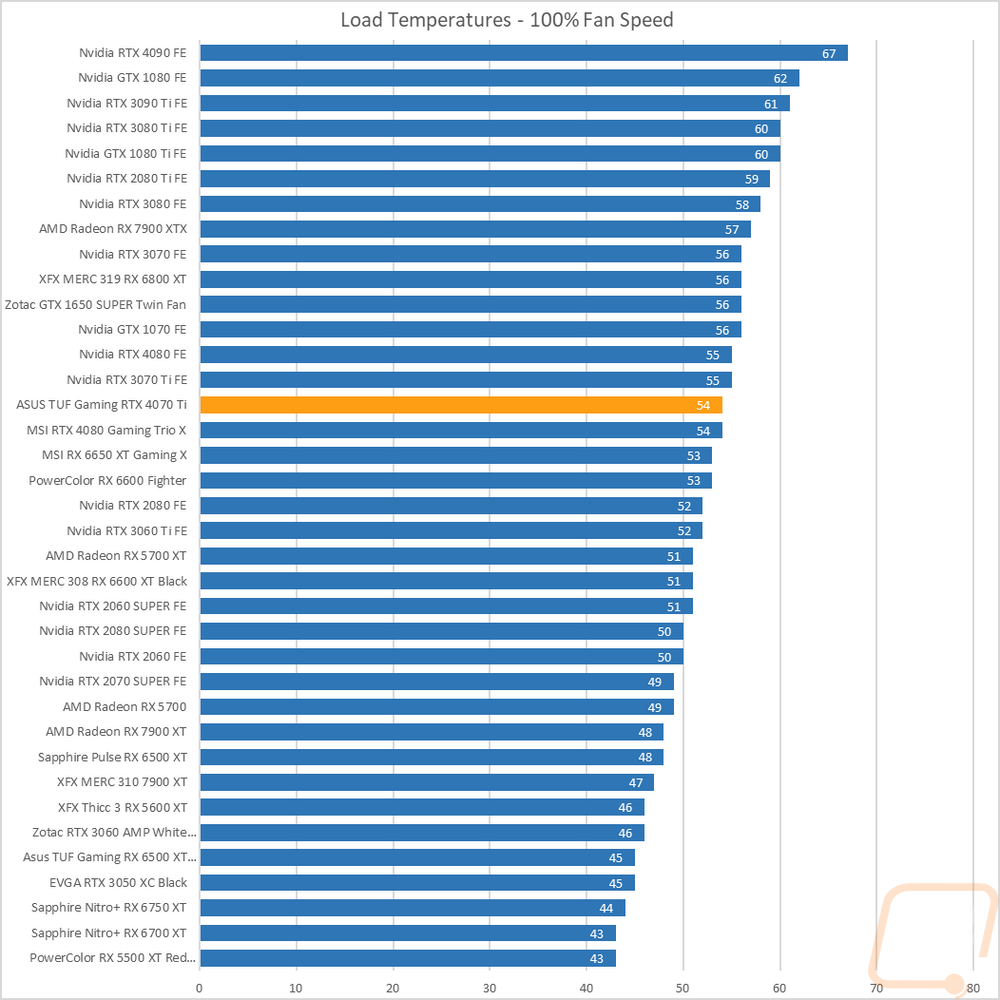
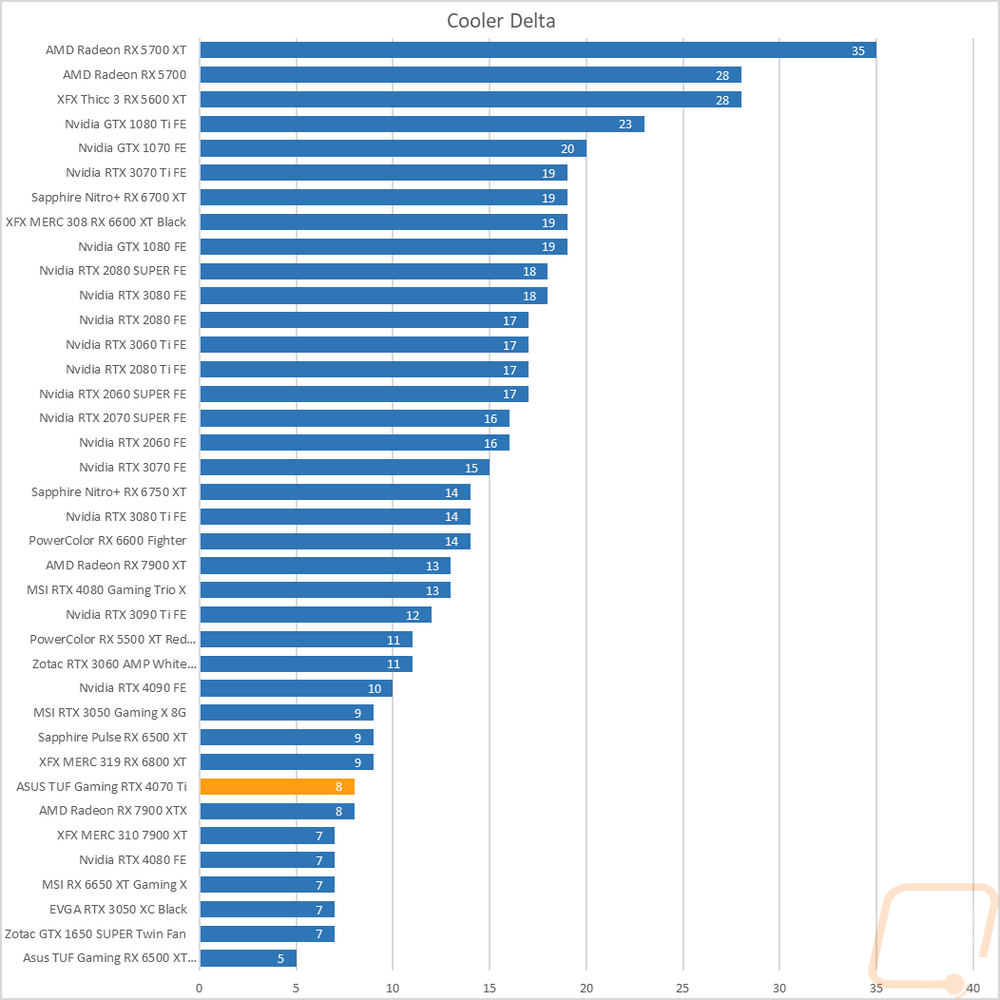
While running the stock fan profile testing I also took the time to get a few thermal images so we could see what is going on. The fan side of the TUF Gaming RTX 4070 Ti OC shows that the hotspot is up on the top edge of the card and even though the fans the heatsink that is visible is running very cool with the hottest area in the bottom left corner there. Even with the TUF Gaming RTX 4070 Ti OC venting to the bottom some, I was surprised there wasn’t more heat up under the card. Up on the top edge with so much of the PCB visible, it isn’t a surprise that is where the hotspot was, down about an inch down right above the GPU, the rest of the top edge was more than 10c less but you can see there is some heat being pushed around the power connection, that area could be a little more insulated off to keep card heat from adding to the heat there. Then on the back, no surprises here, the exposed PCB at the back of the GPU is of course the hottest spot at 47.8c which is cooler than I would have expected. The metal backplate does have some heat in it at 36.5c near the PCI bracket but you can see that gets cooler the farther to the left you go as you get to the blow-through area over there.





